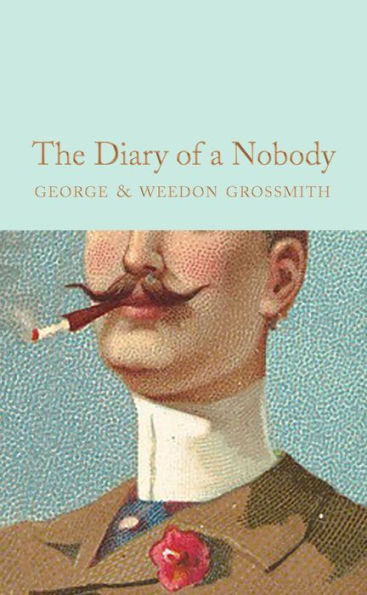Fall is always an exciting season for book lovers—and not just because you get to enjoy pumpkin spice everything while you’re reading. Fancy-pants literary fiction, page-turning thrillers, heartbreaking memoirs—there’s always a glut of great new stuff from September to November. But Fall 2013 is an almost bizarrely amazing time for book nerds (check out our […]

The Diary of a Nobody
216
The Diary of a Nobody
216Hardcover(Reissue)
-
PICK UP IN STORECheck Availability at Nearby Stores
Available within 2 business hours
Related collections and offers
Overview
Part of the Macmillan Collector’s Library; a series of stunning, clothbound, pocket sized classics with gold foiled edges and ribbon markers. These beautiful books make perfect gifts or a treat for any book lover. This edition features Weedon Grossmith’s original illustrations and an afterword by novelist Paul Bailey.
Proud to be ensconced with his wife Carrie at ‘The Laurels’ in the desirable London suburb of Holloway, bank clerk Charles Pooter decides to keep a diary. From the frequent visits from his dear friends Mr Cummings and Mr Gowing to the ups and downs of his feckless son Lupin, the self-regarding Mr Pooter considers, mistakenly, that all aspects of his life are worthy of note. The result is a hilarious spoof and a perfectly pitched satire on late Victorian society.

Product Details
| ISBN-13: | 9781509881390 |
|---|---|
| Publisher: | Macmillan Collector's Library |
| Publication date: | 02/05/2019 |
| Edition description: | Reissue |
| Pages: | 216 |
| Sales rank: | 1,008,671 |
| Product dimensions: | 3.80(w) x 6.00(h) x 0.40(d) |
About the Author
Table of Contents
AcknowledgementsIntroduction
George and Weedon Grossmith: A Brief Chronology
A Note on the Text
The Diary of a Nobody
Appendix A: Contemporary Reviews
- From Baron de B.W. & Co., “Our Booking Office,” Punch, 103 (23 June 1892)
- From The Saturday Review, 74 (23 June 1892)
- From The Athenaeum (13 August 1892)
- From The Literary World, 46 (29 July 1892)
- From The Speaker, 6 (6 August 1892)
- From The New York Times (19 December 1892)
- Publisher’s Note to the “new edition” of 1910 (10 October 1910)
- From The Bookman [London], 39 (December 1910)
- From The Bookman [London], 57 (December 1919)
- From Xanthias, Queen’s Quarterly, 27 (1920)
Appendix B: The Clerk’s Lot in Life
- From Charles Edward Parsons, Clerks; Their Position and Advancement (1876)
- From The Clerk:A Sketch in Outline of His Duties and Discipline (1878)
- From Francis Davenant, Starting in Life: Hints for Parents on the Choice of a Profession or Trade for Their Sons (1881)
- From The Story of a London Clerk: A Faithful Narrative Faithfully Told (1896)
- From Charles Booth, ed., Life and Labour of the People in London (1896)
- From Robert White, “Wanted:A Rowton House for Clerks,” Nineteenth Century, 42 (October 1897)
- From Shan Bullock, Robert Thorne: The Story of a London Clerk (1907)
Appendix C: Domestic Economy at The Laurels
- From G.S. Layard, “A Lower Middle-Class Budget,” Cornhill Magazine, 10 (Jan–June 1901)
Appendix D: Suburban Fictions in the Wake of the Diary
- From R. Andom, Martha and I: Being Scenes from Our Suburban Life (1898)
- From W. Pett Ridge, Outside the Radius: Stories of a London Suburb (1899)
- From Barry Pain, Eliza (1900)
- From Keble Howard, The Smiths of Surbiton: A Comedy without a Plot (1906)
Appendix E: Séances in the Suburbs
- From Morell Theobald, Spirit Workers in the Home Circle (1887)
- From Florence Marryat, There Is No Death (1891)
- From Barry Pain, Eliza Getting On (1911)
Appendix F: Suburban Life and its Critics
- From Geoffrey Mortimer, The Blight of Respectability (1897)
- From H.G. Wells, The War of the Worlds (1898)
- From T.W.H. Crosland, The Suburbans (1905)
- From C.F.G. Masterman, In Peril of Change: Essays Written in Time of Tranquillity (1905)
- From C.F.G. Masterman, The Condition of England (1909)
Works Cited and Recommended Reading
